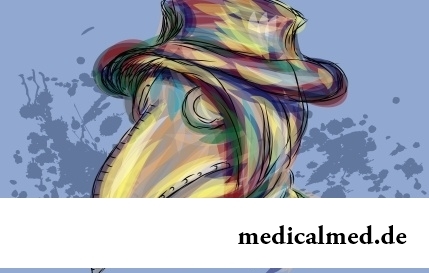





Atrioventricular block
Atrioventricular block is called disturbance of carrying out an electric impulse through  the atrioventricular node located between ventricles of heart and its auricles.
the atrioventricular node located between ventricles of heart and its auricles.
Clinical symptoms of an atrioventricular block
The atrioventricular block, depending on features of disturbance of carrying out an electric impulse is subdivided into several degrees:
- At an atrioventricular block of 1 degree the impulse is carried out with delay;
- Atrioventrikulyarnayablokada 2 degrees is called by periodic carrying out an impulse;
- Total absence of carrying out an electric impulse leads 3 degrees to development of an atrioventricular block.
At an atrioventricular block of 1 degree the impulse passes from auricles to ventricles with a delay on milliseconds. This delay clinically proves nothing and can be revealed only when carrying out an electrocardiography of heart. The atrioventricular block of this degree is quite often observed at absolutely healthy people – teenagers, athletes, and also at people with high excitability of a vagus nerve. But also it can be observed at the people having rheumatism, a sarcoidosis. The atrioventricular block of 1 degree sometimes is caused by some medicines.
At an atrioventricular block 2 degrees not all impulses going from auricles reach ventricles. As a result of it ventricles begin to be reduced in the wrong rhythm and less than auricles. The atrioventricular block can quickly progress and pass 2 degrees in the absence of timely treatment into the atrioventricular block 3 degrees which is one of the most dangerous types of cardiac arrhythmia.
At an atrioventricular block 3 degrees the rhythm of ventricles is set by directly ventricles since the electric impulse from auricles to them does not pass through an atrioventricular node. As a result of it ventricles are reduced less than 40 times one minute, and pumping function of heart is sharply broken.
At this pathology at patients are observed bradycardia (reduction of number of cordial reductions), severe dizzinesses and faints, arterial pressure is usually reduced, even at a small exercise stress there is expressed asthma.
Reasons of development of an atrioventricular block:
- Heart diseases (coronary heart disease, myocardial infarction, postinfarction cardiosclerosis, heart diseases, cardiomyopathy, myocarditis, etc.);
- Reception of some medical supplies (intravenous administration of solution of a papaverine, cardiac glycosides, antiarrhytmic drugs, beta-blockers);
- Intensive sports activities.
Diagnosis
Diagnosis of a disease is based on its clinical symptoms. For confirmation of the diagnosis carry out an electrocardiography of heart (ECG).
Treatment of an atrioventricular block
Therapy  of this type of arrhythmia of heart is carried out depending on disease degree.
of this type of arrhythmia of heart is carried out depending on disease degree.
The atrioventricular block of 1 degree, even when its development is caused by any heart disease, does not demand performing any treatment.
The atrioventricular block 2 degrees in most cases also does not demand performing any therapy. And only the small percent of patients needs installation of a pacemaker.
Treatment of an atrioventricular block 3 degrees consists in implantation of a pacemaker. At critical situations use a temporary pacemaker, and after stabilization of a cordial rhythm and improvement of the general condition of the patient perform surgery on installation of constant. In certain cases, after recovery of the otzabolevaniye which caused development of an atrioventricular block, the cordial rhythm is completely recovered. But the majority bolnykhnuzhdatsya in lifelong use of a pacemaker.
In operating time our brain spends the amount of energy equal to the 10 Watts bulb. So the image of a bulb over the head at the time of emergence of an interesting thought is not so far from the truth.

Residents of big cities quite often have a disease which is known as the syndrome of chronic fatigue (SCF) today. This illness...
Section: Articles about health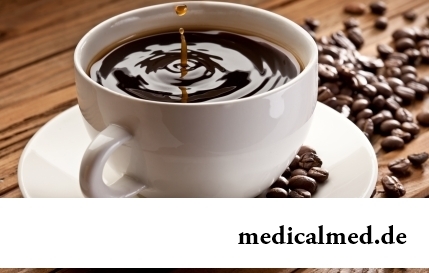
Coffee – favourite drink of many. For the last decades it more than once already declared very harmful, extremely useful and even necessary for normal life activity. In spite of the fact that this product became for us usual for a long time, exists much...
Section: Articles about health
Dietary supplements (dietary supplements) for the last decades were so thoroughly included into our life that, apparently, it is already impossible to find the person who at least once did not try them. At the same time, most of our compatriots have a vague idea of what dietary supplements as they affect a human body consist of and what differ from the real medicines in. Let's try to understand these questions, and at the same time and to understand, such additives are how necessary for us....
Section: Articles about health
The healthy nutrition is the invariable principle of health and good health for long years of the woman. Nevertheless, in рацио...
Section: Articles about health
Traveling all over the world, many try to try the most exotic dishes of national cuisines. There is even a so-called gastronomic tourism which, according to gourmets, not only allows to receive new feelings, but also is capable to show life the friend...
Section: Articles about health
Proofs of efficiency of Mildronate at treatment of coronary heart disease with stenocardia can be found in many publications of the end of the twentieth century. Researches were conducted since 1984, including placebo - controlled effects. In total clinical tests of Mildronate were carried out for more than thirty years....
Section: Articles about health
The popular expression "run from a heart attack" became the motto of the people supporting active lifestyle. Moreover, run became peculiar...
Section: Articles about health
More than a half of the married couples which faced prostatitis – leave. The new broadcast "Female View of Prostatitis" will help to learn – whether you have or your relatives problems....
Section: Articles about health
Quite large number of people adheres to the principles of vegetarian food. But how to be if in a family of vegetarians there are children? Whether it is possible to eat also it the same as to parents, or after all the children's organism is not adapted for the use of exclusively vegetable food? Let's try to understand....
Section: Articles about health
Frosty air, fresh wind and easy snowball at most of Russians are associated with cheerfulness, health and cheerful entertainments, on to...
Section: Articles about health
At this plant there are a lot of names: tuberiferous sunflower, Jerusalem artichoke, solar root, earth pear. Contrary to popular belief, it is not an exotic plant at all. The wild girasol grows in a midland of Russia practically everywhere: at the edges of roads...
Section: Articles about health
What woman does not dream of a beautiful and thick hair? While physicians developed difficult schemes on hair transplant, in the industry of hairdresser's art a few years ago there was a sensation – methods of hair extension appeared. It would seem, dreams came true: though the procedure of building also does not belong to the category cheap, practically any woman can increase several times the volume of hair, change their length and color – generally, to become the real beauty queen....
Section: Articles about health
Let's begin with the fact that a separate illness which is called "adjournment of salts", just does not exist. In practice this household name of plank beds...
Section: Articles about health
Such trouble as the milkwoman's attack, at least once in life happened almost to each woman. Prevalence of a disease is explained by the fact that the causative agent of an illness belongs to the so-called opportunistic microflora living on mucous an obol...
Section: Articles about health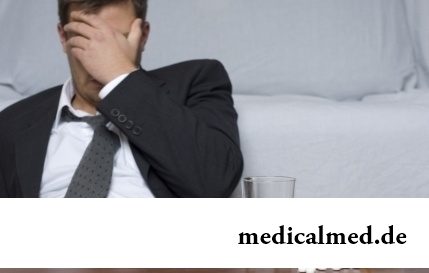
Impossibility to conceive the child – a trouble of many Russian families. During quite long time was considered that main "culprits" of troubles such are women. Modern physicians claim that the situation is different: about a half of failures in attempts of reproduction are connected with male infertility....
Section: Articles about health
Diapers for adults – individual one-time means of hygiene which in some situations is irreplaceable, and from such situats...
Section: Articles about health
The technique of acupuncture (acupuncture) is used in the medical purposes more than three and a half millennia. It is eurysynusic and recognized as official medicine in the majority of the developed countries of the world. Influence by fine needles on so-called points...
Section: Articles about health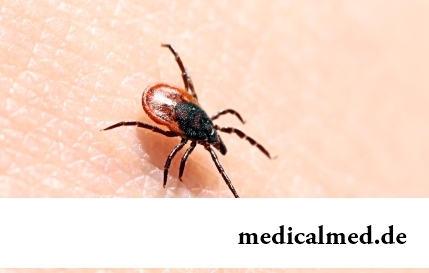
Tick-borne encephalitis – one of the most dangerous viral diseases which causative agents transfer and is given to people by ixodic mites. These are the small blood-sicking insects living in the considerable territory of our country. The person bitten by a tick can catch also erlikhiozy, bartonnelezy, babeziozy, mycoplasmosis and Lyme's disease. As well as encephalitis, these illnesses affect the central nervous system, and as specific antiviral therapy does not exist, the forecast very to a neuta...
Section: Articles about health
Work of a brain is extremely complex and in many respects is not studied yet. It is confirmed also by the features of thought processes which are shown in...
Section: Articles about health
All are familiar with cold, and practically everyone believes that he has sufficient knowledge and experience that correctly to treat it. In practice most of people makes mistakes in attempts to get rid of rhinitis, and divides numerous delusions it....
Section: Articles about health
Childbirth is the most important event in life of each woman. We are women we give birth to the new little man on this light. Now the tendency to that was outlined, as men want to participate in labor too. But there is a question and whether it is worth allowing the husbands on childbirth?...
Section: Articles about health
The mankind knows that some toxins at intake in the minimum quantities have therapeutic effect...
Section: Articles about health
According to data of World Health Organization, the cataract is diagnosed almost for 7% of the population of Earth. The statistics of incidence is considered not full as at an initial stage the illness, as a rule, does not cause to the person of special inconveniences, and many having got sick...
Section: Articles about health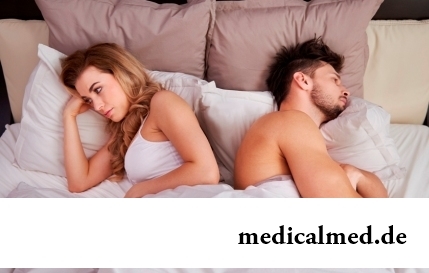
From sexual contacts each person can test insufficiently strongly expressed sexual desire or lack of satisfaction from time to time. However when it happens regularly, it is an occasion to think about health. Most of people does not hurry to ask similar questions physicians: one consider that they will be able to cope with malfunctions independently, others hesitate to report to strangers about so delicate problems and hope that troubles will stop by itself....
Section: Articles about health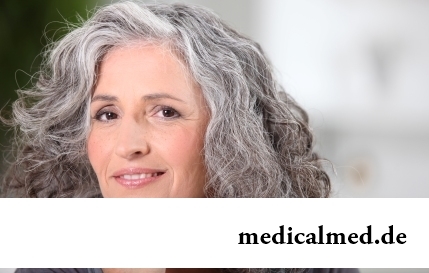
Sooner or later hair turn gray at all. Many people try to hide these changes, returning natural color of the hair with the help about...
Section: Articles about health
High temperature - a frequent symptom of such widespread diseases as a SARS, quinsy, pneumonia, etc. To reduce heat, having facilitated a condition of the patient, doctors recommend to accept antipyretics, however their use is not always possible. Too h...
Section: Articles about health
All know that self-treatment is dangerous. However absolutely it is almost impossible to do without it. Rate of modern life does not allow to handle each small trouble to the doctor and information on ways of independent delivery of health care is quite available. Means, all of us have only one: to learn to give this help competently and in those limits in which it is possible for the person who does not have vocational education....
Section: Articles about health
